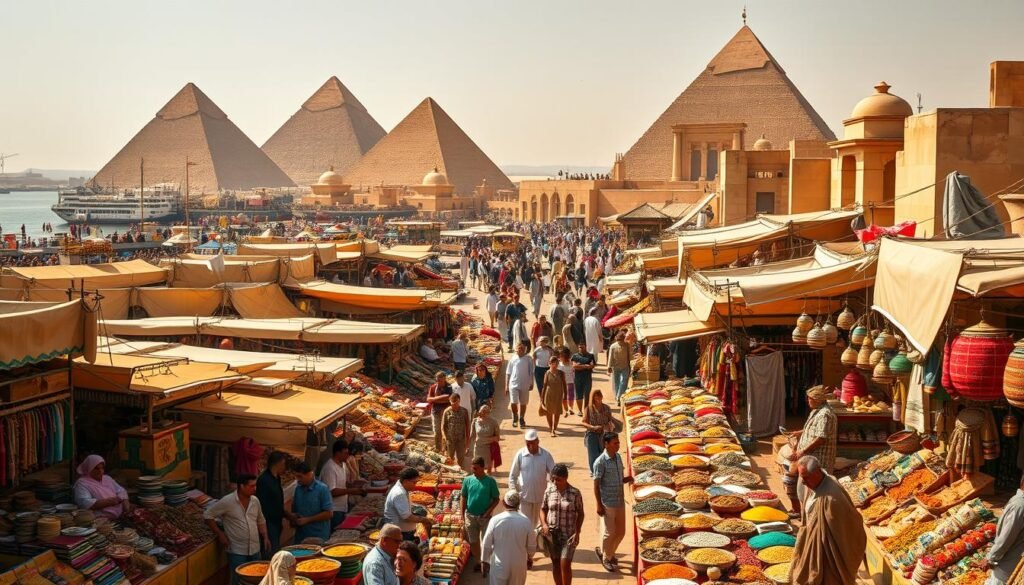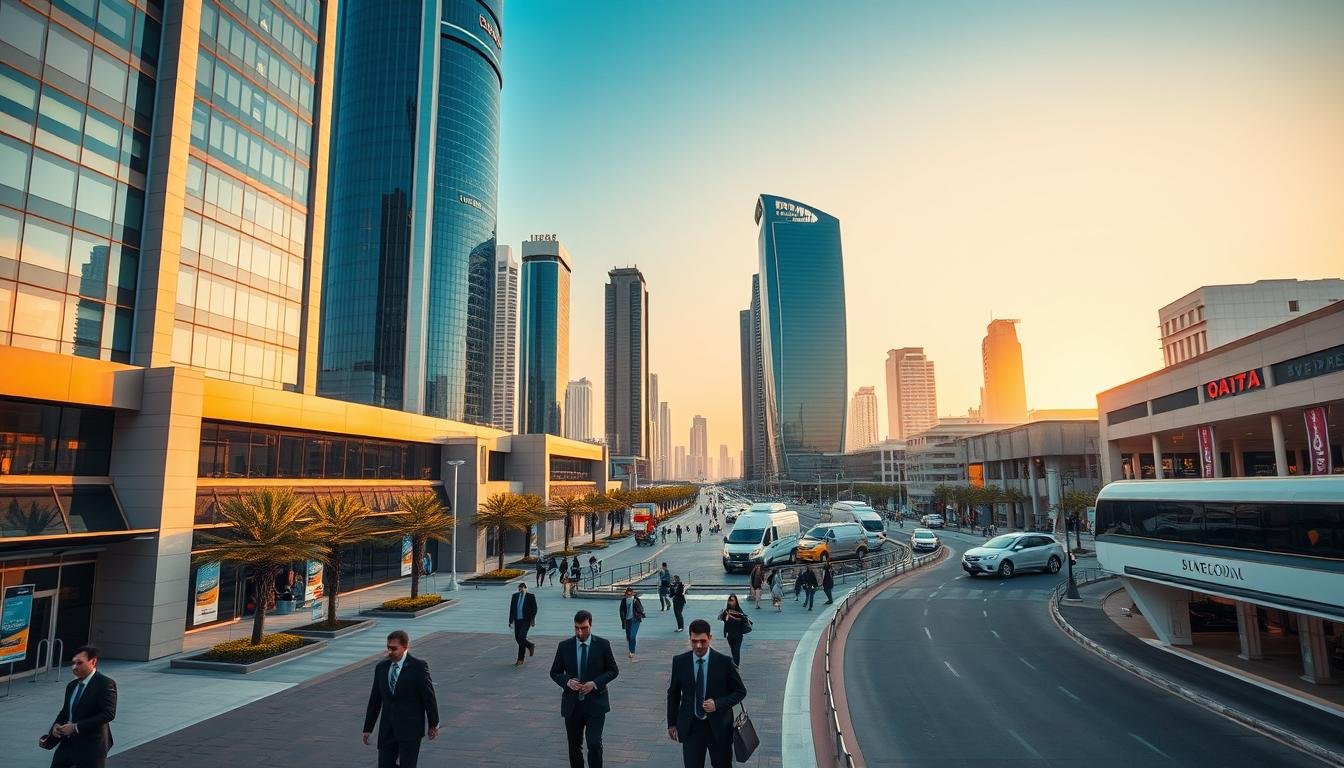What makes a country’s economy thrive in a rapidly changing global landscape? For many, the answer lies in its ability to adapt, innovate, and leverage strategic partnerships. With a population exceeding 103 million and a GDP of $402.8 billion, this nation stands as a beacon of potential in the region.
The country’s trade relationships, particularly with the U.S., have rebounded strongly post-pandemic. Key exports like agricultural goods and electronic products highlight its competitive edge. Additionally, significant investment in infrastructure has laid the foundation for sustained growth.
Strategic agreements and a focus on sector development further enhance its appeal. Whether it’s transportation or technology, the country is making strides to solidify its position on the global stage. This article delves into the factors driving these trends and explores the opportunities they present.
Key Takeaways
- Strong trade ties with the U.S. boost economic resilience.
- Infrastructure investments are key to long-term growth.
- Strategic agreements enhance market stability.
- Exports like agricultural goods drive competitiveness.
- Sector development fosters innovation and opportunity.
Comprehensive Overview of the Egypt Market
Understanding the economic dynamics of a nation requires a deep dive into its GDP and sector performance. In recent years, the country has shown resilience with a GDP growth of 5.9% in 2021 and a projected 5.2% in 2022/23. This growth is fueled by strategic reforms and targeted investments across key sectors.
Reforms led by the IMF have played a pivotal role in shaping the economic landscape. These policies focus on stabilizing the currency exchange rate and managing inflation, which currently stands at 33.7%. Such measures are essential for fostering long-term development and economic stability.
The Suez Canal remains a critical asset, contributing 2.2% to the GDP. Its strategic location enhances trade and logistics, making it a cornerstone of the economy. Despite recent challenges, the canal continues to drive economic activity and attract global attention.
The manufacturing sector is another key driver, accounting for a significant portion of job creation and economic stability. With 15% of the workforce employed in this sector, it plays a vital role in reducing unemployment and boosting productivity.
Emerging opportunities in agriculture, energy, and services further underscore the nation’s potential. These sectors are benefiting from targeted development initiatives, paving the way for sustainable growth. As the economy evolves, these areas are expected to play an increasingly important role in shaping the future.
Sector Analysis and Trade Opportunities
Exploring the dynamics of trade and industry reveals key opportunities for economic growth. The country’s economy thrives on its ability to adapt and innovate, particularly in sectors like manufacturing and textiles. With a focus on trade agreements, the nation has strengthened its position in global markets.
Exports, Imports, and Trade Agreements
The U.S.-Egypt trade relationship is a cornerstone of economic stability. In 2021, exports to the U.S. reached $5.0 billion, with textiles accounting for $1.1 billion. This highlights the industry’s role in driving competitiveness.
Programs like the Qualifying Industrial Zone (QIZ) have been instrumental. These trade agreements reduce tariffs, making exports more attractive. The exchange rate policies also play a crucial role in shaping trade dynamics.
Imports, particularly in the oil gas sector, are essential for sustaining manufacturing. The intertwined relationship between energy and industry ensures a steady flow of resources, boosting overall productivity.
Manufacturing, Textile, and Apparel Insights
The manufacturing sector is a significant contributor to the economy, employing 15% of the workforce. Textiles and apparel, in particular, have seen steady growth, driven by global demand and competitive pricing.
Consumer trends and business sentiment are shaped by these import and export activities. The country’s ability to meet international standards has positioned it as a key player in regional and global markets.
Strategic investments in gas and energy further enhance manufacturing capabilities. This synergy between sectors ensures long-term growth and stability, making the country a hub for trade and innovation.
Infrastructure Developments and Investment Trends in Egypt
Strategic investments in infrastructure are transforming the economic landscape. Large-scale projects are driving growth and innovation across key sectors. These initiatives are not only enhancing connectivity but also creating new opportunities for business and investors.
Mega Projects and Strategic Investment Zones
The government has launched several mega projects to boost economic development. One of the most notable is the national administrative capital, designed to alleviate pressure on existing urban centers. Another key initiative is the industrial zone around the Suez Canal, which aims to enhance trade and logistics.
These projects are attracting significant foreign direct investment (FDI). The U.S. is the third-largest investor, with substantial contributions to the oil and gas, healthcare, and telecommunications sectors. These investments are critical for sustaining long-term growth.
FDI Insights and Public-Private Partnerships
Public-private partnerships (PPPs) are playing a crucial role in infrastructure development. These collaborations are driving innovation in construction and technology, ensuring that projects meet international standards. For example, partnerships in the energy sector are improving service delivery and reducing costs.
Consumer-driven trends are also shaping infrastructure priorities. As demand for better services grows, projects are increasingly focused on improving quality of life. This includes investments in transportation, utilities, and residential developments.
Over the past year, the construction sector has seen steady growth, with a projected annual increase of 6.5% by 2025. This growth is fueled by both private and public investments, making it a cornerstone of economic stability.
Impact of Global Events on Egypt’s Economy
Global events have a profound influence on economic stability and growth. From pandemics to geopolitical shifts, these factors shape the environment for trade, investment, and development. Understanding their impact is crucial for navigating the challenges and opportunities they present.
COVID-19 Recovery and Tourism Resurgence
The COVID-19 pandemic brought significant disruptions, particularly to the tourism sector. Initially, international travel came to a standstill, causing a sharp decline in revenue. However, recovery efforts have been underway, with a notable rebound in tourism activity.
Government initiatives and adaptive strategies have played a key role in this resurgence. Investments in infrastructure and marketing campaigns have helped attract visitors. This recovery is vital, as tourism contributes significantly to the current account and overall GDP.
Inflation, Exchange Rates, and Geopolitical Factors
Economic pressures like inflation and exchange rate adjustments have also shaped the landscape. Inflation reached 8.8% in February 2022, driven by rising raw material costs and supply chain disruptions. The Egyptian pound has seen adjustments, moving from EGP 15.7 to EGP 18.2 against the U.S. dollar.
Geopolitical factors further complicate the environment. Trade tensions and regional conflicts impact project investments and economic stability. Despite these challenges, the economy has shown resilience, supported by strategic reforms and targeted policies.
Fluctuations in raw material prices and current account imbalances remain critical concerns. Addressing these issues is essential for maintaining long-term growth and stability. The interplay between government projects, environmental mandates, and economic requirements continues to shape the path forward.
Conclusion
Navigating economic challenges requires a clear strategic plan and innovative solutions. This analysis highlights the importance of targeted investments and ongoing reforms in driving growth. Technology and innovative platforms play a crucial role in sustaining competitiveness and economic stability.
Accurate and timely information is essential for navigating trade agreements and market changes. A focused approach empowers businesses to leverage opportunities effectively. The interplay between economic policy, investment trends, and global dynamics underscores the need for adaptability.
As the economic landscape evolves, a solution-based approach will be key to future success. For further insights and tailored strategies, consult our comprehensive guide to stay ahead in this dynamic environment.
FAQ
What are the key sectors driving growth in Egypt?
The country’s economy is fueled by sectors like oil and gas, manufacturing, construction, and tourism. The Suez Canal also plays a significant role in trade and logistics.
How has inflation impacted the economy recently?
Inflation has put pressure on consumer prices and the exchange rate. However, reforms and strategic policies aim to stabilize the economy and reduce its effects.
What role do trade agreements play in Egypt’s export strategy?
Trade agreements open access to global markets, boosting exports of textiles, apparel, and raw materials. They also attract foreign investment and enhance trade relations.
What infrastructure projects are shaping Egypt’s development?
Mega projects like the New Administrative Capital and strategic investment zones are transforming the infrastructure landscape, creating opportunities for investors and businesses.
How has COVID-19 affected tourism and economic recovery?
The pandemic initially slowed tourism, but recovery efforts are underway. The sector is regaining momentum, supported by safety measures and promotional campaigns.
What are the benefits of public-private partnerships in Egypt?
These partnerships drive infrastructure development, improve service delivery, and attract foreign direct investment, fostering sustainable economic growth.
How does the exchange rate impact businesses and consumers?
Fluctuations in the Egyptian pound affect import costs and consumer prices. Businesses adapt by focusing on local raw materials and cost-effective solutions.
What opportunities exist in the manufacturing sector?
The sector offers growth potential in textiles, apparel, and technology. Government reforms and incentives encourage local production and export expansion.
How do geopolitical factors influence Egypt’s economy?
Regional stability and global events impact trade, investment, and oil prices. The country navigates these challenges through strategic planning and partnerships.
What is the outlook for foreign direct investment in Egypt?
FDI is expected to grow, driven by infrastructure projects, economic reforms, and a favorable business environment. Investors are drawn to opportunities in energy, construction, and technology.










